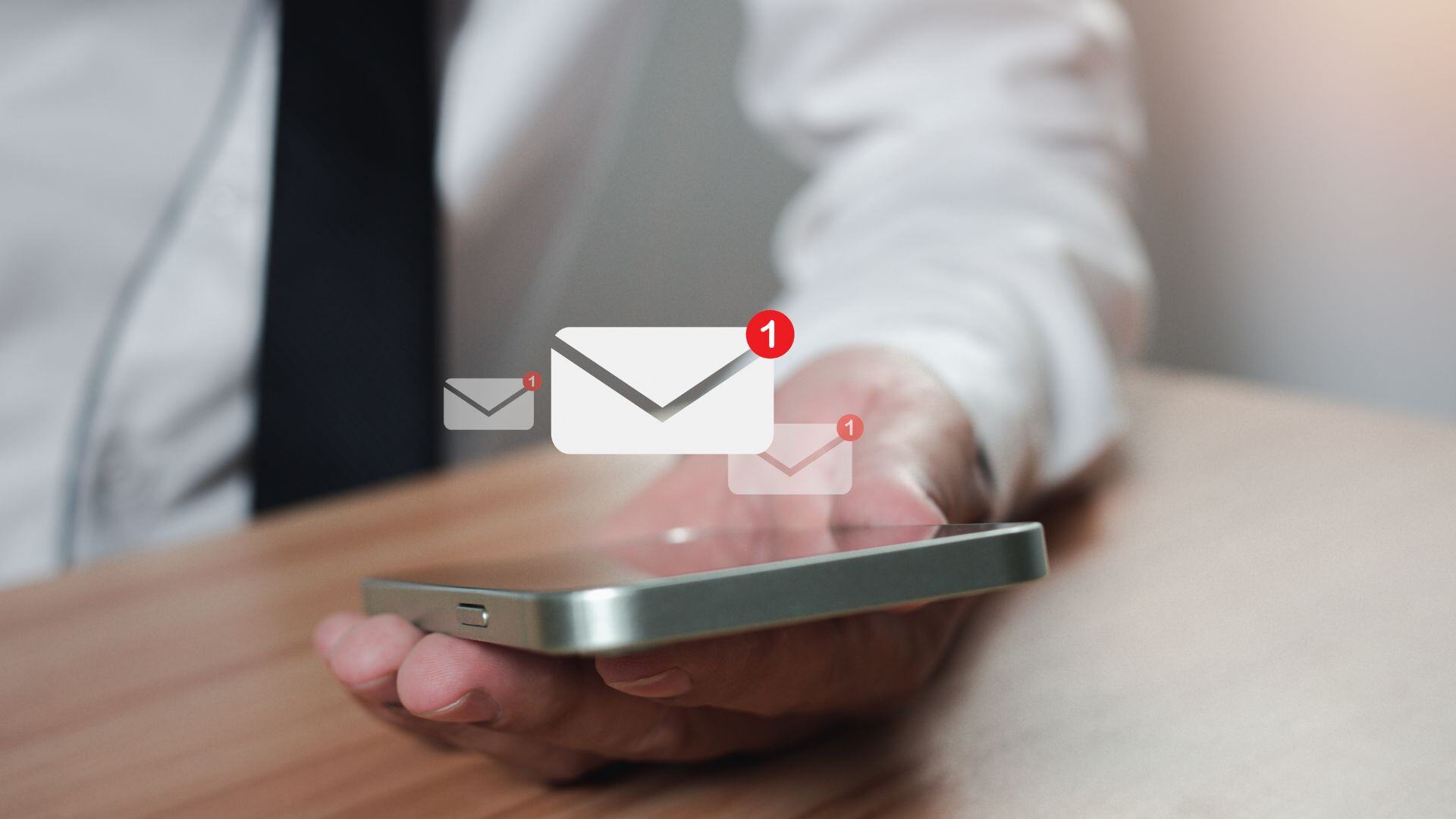Email marketing in general can be tricky.
Sending cold B2B emails presents an even greater set of challenges.
At ProSales Connection, we've sent tens of thousands of cold emails over the last four years, and we’ve learned the dos and don'ts of B2B cold email the hard way.
This article explains the top cold email marketing mistakes that we wish we knew in the beginning and some best practices to follow.
If you haven't already, check out our other blog series on cold email:
Cold Emails: An Effective B2B Marketing Strategy When Done Right
30 Research-Backed High-Performing Cold Email Subject Lines
6 High-Performing Cold Email Templates for Different Personas
Mistake #1: Not Validating Your Email Addresses
The fact is that more than 50% of consumers give out the wrong email when filling out forms online.
If you're skipping this step, you need to start validating your emails ASAP. Validating your email addresses improves your sender reputation and weeds out the fake or inaccurate emails in your list.
This step is especially important when you have a limited number of email sends in your email platform plan and want to prevent an expensive upgrade.
More importantly, sending emails to invalid addresses will result in hard bounces. Get too many of these, and you can jeopardize your good standing with your email provider. They might even suspend your account
Mistake #2: Using Spam Trigger Words
Use benign words like "price," "cost," or "problem" in your subject line, and your cold email could end up in the spam folder.
Email providers like Google, Yahoo, and Microsoft scan for words typically associated with emails sent by fraudsters and scammers. To keep their users safe, they put messages containing trigger words in the spam folder where they will probably never be read.
Using a few of these words in a way that makes sense won't always get your email flagged, but it's best to try to avoid using them whenever possible.
Mistake #3: Adding Attachments to Your Emails
Adding attachments like PDFs to your cold emails is an absolute no-no. PDFs have frequently been used to carry viruses, and there are a few reasons why adding them and other files to your emails is a bad idea.
First, it can trigger your recipient's email provider to put it in the spam folder (reducing your open rates and damaging your reputation). If it does reach your recipient's inbox and they open the email, chances are they won't download or open the attachment anyway.
If you want to give your prospects a free ebook, course, or template, send them a link instead. And if you want to be really careful, you can ask them to reply to get the link because links can also affect deliverability.
Mistake #4: Not Testing Email Deliverability First
Before sending an email to your entire list, send a few messages to your test accounts on all the major email services. This test isn't foolproof since the filters are partially based on the user's behavior, but if your test email gets sent to spam, you can assume the emails going to your list will, too.
Mistake #5: Not Sending Enough Emails
The more emails you send, the more likely you will get enough responses to meet your goals. Even if you have a great offer, there's no guarantee your recipients will get your email, see your email, or open your email.
If they do open your email, you still have to get them excited about the offer and that is easier said than done.
To get around this, send at least 20-50 emails per week.
Mistake #6: Sending Too Many Emails
While sending a lot of emails is a good thing (provided you have legitimate leads and email addresses), be careful not to send too many emails.
Don't send 500 emails per day, for example, from a single email or domain.
Keep in mind that if the account you are sending from is new, you'll need to spend some time warming it up before you can send out a larger quantity of emails.
Once your email account is warmed up, best practice is to keep the daily cold email volume below 150-200.
Mistake #7: Focusing on What You Want
You're not going to get very far by being pushy with your prospects.
We've all seen those emails that focus more on how you can help the sender than how the sender can help you. These emails are rarely successful and almost always end up in the trash.
Think more about how you can help your prospect when constructing your cold emails. Put yourself in their shoes and think about what they might want to hear.
Mistake #8: Giving Too Many Options
The fewer options you provide to your recipient, the better. Try not to give your prospects too many action items, or they might end up doing nothing with your email.
As a general rule, offer one action for the prospect to take in any given cold email.
Mistake #9: Your Sales Pitch Is Too Aggressive
Many of your prospects will be new to your product or service and will likely not be ready to take the next step after viewing one email.
Don't coerce prospects into booking a meeting right away if they're not ready for it yet. Offer some helpful information or resources, ask questions, and let them see if they are a good fit for you.
You can leave the option to book a meeting open, such as in a signature CTA or as an afterthought, but don't be too aggressive about it.
Mistake #10: Not Offering Lead Magnets
You have something to offer your prospects, so why are you not including it in your emails?
Your recipients might be more inclined to communicate with you if you give them something in return, like a free tool, ebook, or workbook.
Mistake #11: Not Establishing Your Credibility
One of the keys to gaining a prospect's trust is being transparent about who you are, why you're reaching out, and why you think you can help.
What makes you credible and trustworthy?
Is it a success story with a similar company or client? Do you have a lot of social proof?
Make these points clear when introducing yourself to the prospect.
Mistake #12: Not Using Personas
Personas can help you understand the target and their needs while writing your cold emails.
An essential factor to consider when developing a persona is job function. If you don't know what your target does, it will be a lot harder to make a human connection with them. Personas allow you to add more context to your cold emails at scale.
Mistake #13: Not Tailoring Your Message
Using the recipient's first name is a no-brainer in cold email marketing. But when was the last time you did more research on a prospect and personalized the message even more?
If possible, try to do some research and comment about something more personal that will get their attention.
For example, you might want to say something about their company, where they went to college, or a recent LinkedIn post. Just don't get too personal and talk about their family life.
Mistake #14: Not Optimizing Your Subject Line
We already talked about keeping trigger words out of your email's subject line, but how will you entice the recipient to open the email?
You can try adding your contact's name and their company name to the subject line, but make sure it doesn't sound spammy. You can also ask a question or mention a free product or exclusive discount that you're offering.
Also, since emails are increasingly being opened on mobile devices, it is wise to consider the length of your subject lines as well. Most mobile inboxes will only display around 30 characters, so keeping the subject line brief can also impact how many emails get opened.
Be sure to A/B test your subject lines as well to see which one gets the most attention.
Mistake #15: Your Email Is Too Long
If a prospect is willing to open your email, respect their time by keeping the email short. Include a link to a landing page or free download if they want in-depth information. Challenging yourself to keep your message under 200 words is a good practice.
Mistake #16: Your HTML Is Too Complicated
Don't use super complex HTML in your emails. The design might look nice, but the HTML can cause deliverability issues. As a general rule, keep your HTML simple and your emails short.
You can also experiment with text only emails to see which performs better.
Mistake #17: Using Email When You Should Be Calling
Some messages are best delivered via email, and others are best suited for a phone call.
Don't make the mistake of emailing prospects who are ready for a phone call and calling prospects who aren't prepared to have a conversation about your offer. If you need help deciding when to call and when to email, read this guide next.
At ProSales Connection, we offer B2B cold calling, cold email, and digital marketing services. If you need help setting appointments and generating quality leads, explore our website or book a free 15-minute call today to learn more.






